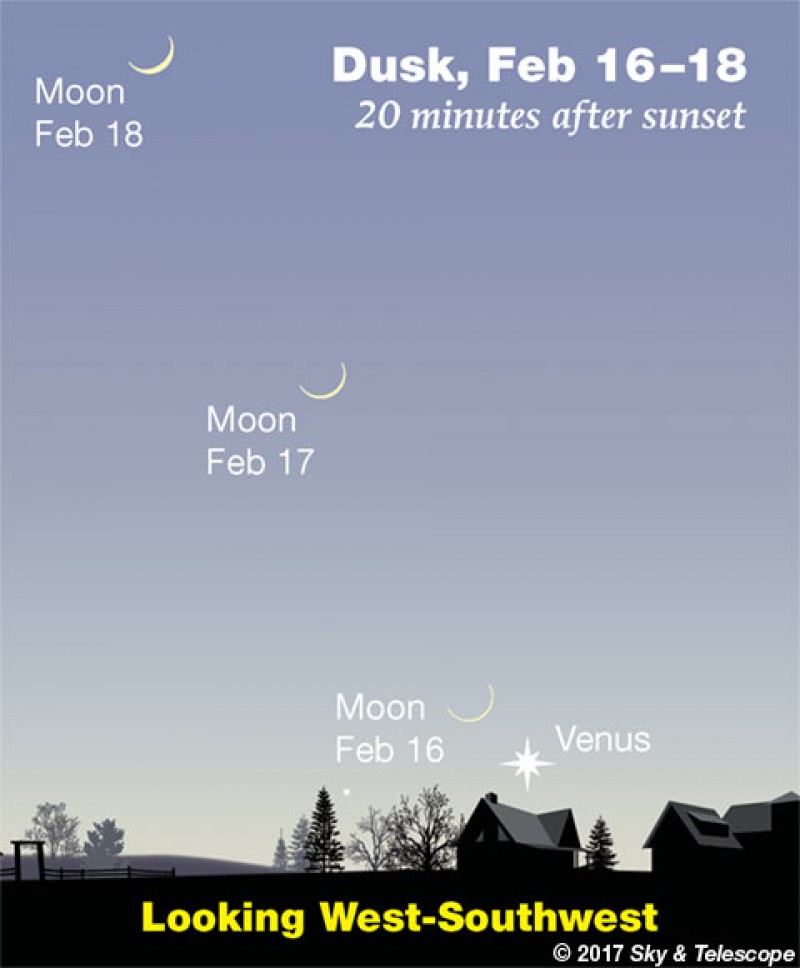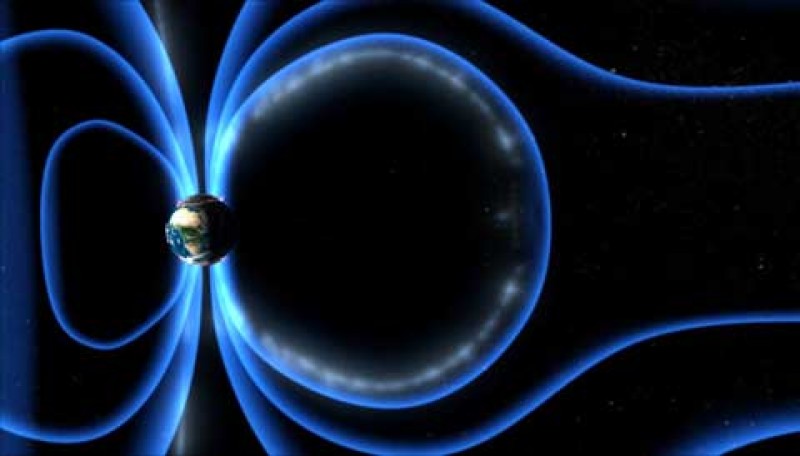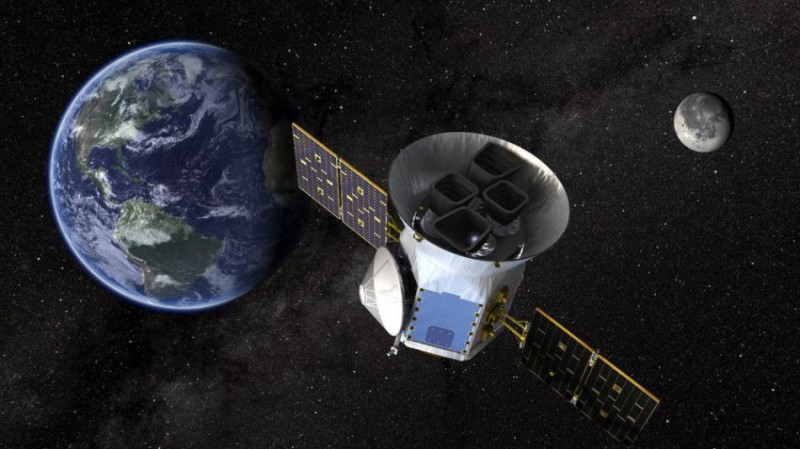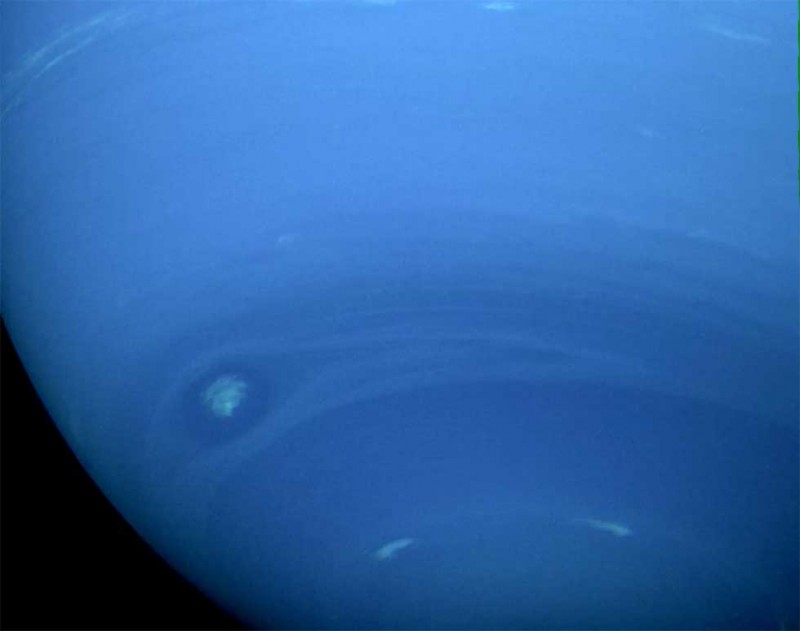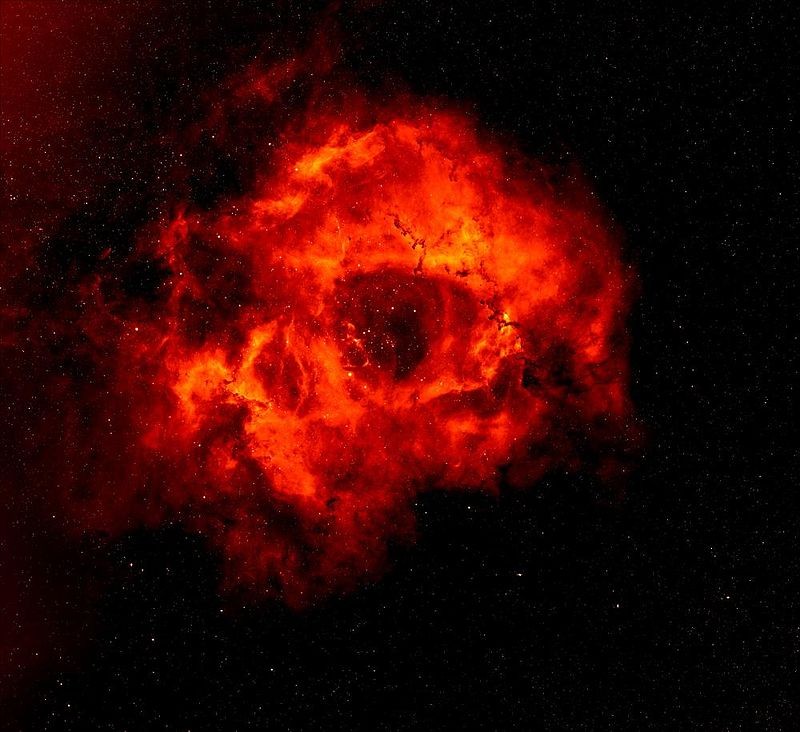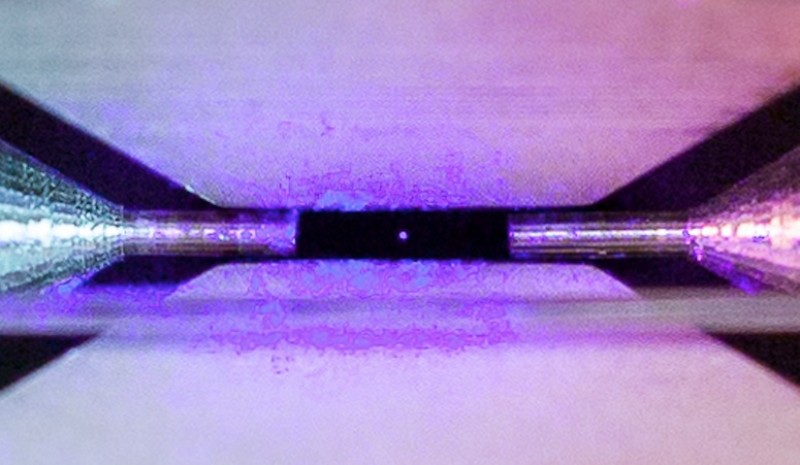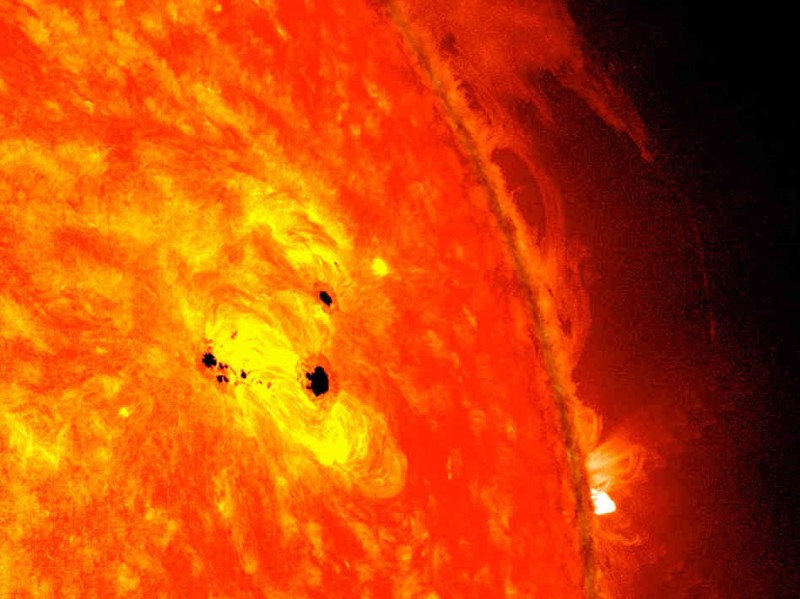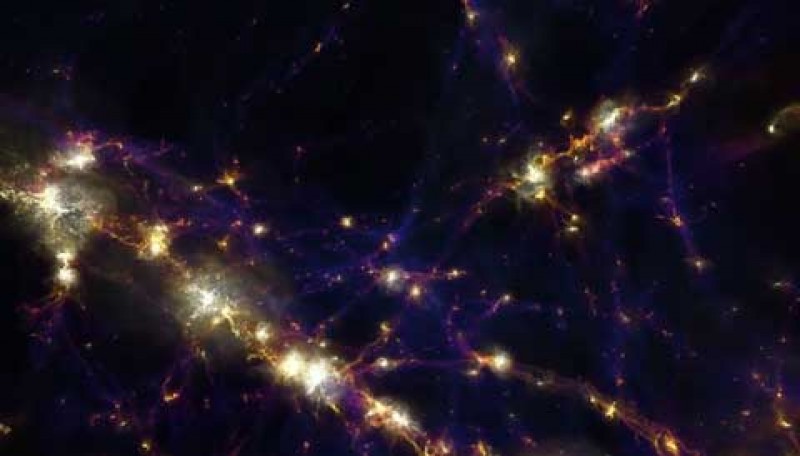Blog
This Week’s Sky at a Glance, February 16 – 24
Wednesday, February 21st 2018 06:59 PM
Friday, February 16
• About 15 to 20 minutes after sunset, use binoculars to look just above the west-southwest horizon for Venus and a super-thin crescent Moon, as shown at right. The crescent is only a little more than 24 hours old for North America; new Moon was yesterday at 4:04 p.m. EST.
Saturday, February 17
• Now the waxing crescent Moon is easier to see in the west-southwest after sunset. Its curved side points the way down toward Venus this evening and tomorrow, as shown at right.
Sunday, February 18
• During February, Orion stands high in the south after dinnertime. Lower left of it blazes Sirius, and farther left of Orion shines Procyon. Extending up from Procyon is dim little Canis Minor: the doglet whose top is barely visible in profile in a dark sky. He's currently vertical; Procyon is his rump. We only see stars marking the profile outline of his back (from Procyon up to 3rd-magnitude Gomeisa) and the back of his head (Gamma and Epsilon Cani...
Read More
Read More
Venus Peeps Back Into View at Dusk
Wednesday, February 21st 2018 06:52 PM
Love, beauty, desire, fertility and, prosperity. These are all attributes of Venus. I would like to add another: visibility. Venus has finally returned to the evening sky after hiding in the glare of the Sun for months. It's the first bright planet to hit the evening scene since we got our last glimpse of Saturn at dusk in late November.
Not that finding Venus will be easy. At least for the next couple weeks it lurks near the western horizon at dusk. To see it you'll need to look up your local sunset time so you can begin watching for the planet 20–25 minutes later. Look for a tiny point of light punctuating the yellow-orange twilight glow. Binoculars can be a big help in tracking it down, especially if the sky's hazy.
The sooner you familiarize yourself with the planet, the better prepared you'll be when it comes to viewing the week-long tango between Venus and returning Mercury at the start of March. They'll be closest (1° apart) for the Americas on the 3...
Read More
Read More
Chorus Waves Drive the Beat for Pulsating Northern Lights
Tuesday, February 20th 2018 09:21 PM
When the magnetic field pinches off on Earth's nightside, charged particles can cross into the magnetosphere, eventually raining down on the ionosphere.NASA / Goddard Space Flight Center- Conceptual Image Lab
We may be approaching solar minimum, when the Sun’s activity cycles down and fewer sunspots appear, but that doesn’t mean auroras disappear. Charged particles are always streaming away from the Sun and interacting with Earth’s magnetic field. And whenever Earth’s nightside magnetic field pinches off, it sends some of these particles shooting down toward our ionosphere in what is known as a substorm, creating Northern Lights.
While astronomers have a good working theory to describe how substorms work, they have yet to directly observe all of the details. But on March 27, 2017, space-based and ground-based stations offered space scientists the opportunity for direct observations, which finally confirm a decades-old theory explaining a pulsati...
Read More
Read More
NASA's Next Planet Hunter Arrives in Florida Ahead of April Launch
Tuesday, February 20th 2018 09:07 PM
Artist's illustration of NASA's Transiting Exoplanet Survey Satellite (TESS), which will hunt for exoplanets orbiting the brightest stars just outside our solar system.
Credit: NASA's Goddard Space Flight Center
The Transiting Exoplanet Survey Satellite (TESS) was delivered via truck to NASA's Kennedy Space Center (KSC) on Monday (Feb. 12), agency officials said. The spacecraft made the journey from the Dulles, Virginia, facilities of the aerospace company Orbital ATK, which had spent the last year building and testing TESS.
TESS is scheduled to lift off atop a SpaceX Falcon 9 rocket no earlier than April 16 from Cape Canaveral Air Force Station, which is next door to KSC.
The spacecraft will then spend at least two years studying more than 200,000 of the sun's closest and brightest stellar neighbors, looking for tiny brightness dips caused by planets trekking across the stars' faces. NASA's prolific Kepler space telescope has found nearly 2,...
Read More
Read More
A Giant Storm on Neptune Is Disappearing as Hubble Telescope Watches
Friday, February 16th 2018 07:26 PM
When NASA's Voyager 2 spacecraft flew by Neptune in 1989, it observed large, dark storms inhabiting the distant planet's atmosphere. Since then, scientists have monitored Neptune using the Hubble Space Telescope and seen new storms develop.
But unlike Jupiter's Great Red Spot, a storm which has been roiling for at least two centuries, the storms brewing on the windy planet Neptune come and go in just a few years — and now, for the first time, researchers have seen one begin to disappear, NASA officials said in a statement. [The Amazing Blue Planet Neptune in Photos]
The giant, dark storms on Neptune are impermanent features on the distant planet.
Credit: NASA/JPL
"It looks like we're capturing the demise of this dark vortex, and it's different from what well-known studies led us to expect," Michael Wong, a researcher at the University of California at Berkeley and lead author on the new work, said in the statement. Previous simulations sugges...
Read More
Read More
Astrophotographer Spots Elon Musk's Roadster Cruising Through Space (Video)
Thursday, February 15th 2018 09:32 PM
With a dummy named "Starman" on board, the Roadster launched into space on Feb. 6 and is now orbiting the sun somewhere between Earth and Mars (but not heading toward the asteroid belt, as Musk first announced).
"Once footage of the car and Starman started to arrive and people wondered if it could be observed from Earth, there was just one thing in my mind: to find the answer to that question and if yes, to try take a picture — better yet, a video — of it," Andreo wrote on his website, DeepSkyColors.com. [In Photos: SpaceX's 1st Falcon Heavy Rocket Test Launch Success!]
To catch a view of the shiny car as it cruised off into space, Andreo packed up his telescopes and cameras, and drove to the Monte Bello Open Space Preserve in California, a semidark site just a short drive from his home in Sunnyvale.
Using an online ephemeris calculator provided by NASA's Jet Propulsion Laboratory (JPL), Andreo was able to determine exactly where and when to...
Read More
Read More
Getting to the Heart of the Rosette Nebula: How It Got Its Rose Shape
Wednesday, February 14th 2018 07:48 PM
This image of the Rosette Nebula was created using data taken through the INT Photometric H-Alpha Survey of the Northern Galactic Plane.
Credit: Nick Wright/Keele University
A new simulation explains the hole at the center of the Rosette Nebula that gives the cloud of interstellar gas and dust its distinctive rose-like shape.
The Rosette Nebula sits in the Milky Way about 5,000 light-years from Earth. Massive stars at its core have blasted a hole in the cloud of material with radiation and flows of charged gas particles, called stellar wind.
But the size of the hole didn't match up with the age of the central stars; simulations suggested that an even larger hole should have bloomed in the material.
"The massive stars that make up the Rosette Nebula's central cluster are a few millions of years old and halfway through their lifecycle," Christopher Wareing, a researcher at the University of Leeds in England and the lead author of the new work, said in a statement...
Read More
Read More
There You Are -- Photo of a Single Strontium Atom
Wednesday, February 14th 2018 06:23 PM
This image shows a Strontium atom held by the fields emanating from the metal electrodes surrounding it. The distance between the small needle tips is about two millimeters. Humans cannot see things that are smaller than the wavelength of the light that is reflected from the surface of an object. And Strontium has an atomic radius that is smaller than the wavelength of light. So, the question is: How can we "see" it? The answers is that we are not actually "seeing" the atom of Strontium, but rather we are seeing the light that the excited atom is giving off. (Image Credit: David Nadlinger, University of Oxford)
"Single Atom in an Ion Trap," by David Nadlinger, from the University of Oxford, shows the atom held by the fields emanating from the metal electrodes surrounding it. The distance between the small needle tips is about two millimeters.When illuminated by a laser of the right blue-violet color the atom absorbs and re-emits light particles sufficiently quickly for an or...
Read More
Read More
Global Warming vs. Solar Cooling: The Showdown Begins in 2020
Tuesday, February 13th 2018 08:41 PM
These two large black spots on the sun, known as sunspots, appeared quickly in February 2013, and each is as wide across as six Earths.
Credit: NASA/SDO/AIA/HMI/Goddard Space Flight Center
The sun may be dimming, temporarily. Don't panic; Earth is not going to freeze over. But will the resulting cooling put a dent in the global warming trend?
A periodic solar event called a "grand minimum" could overtake the sun perhaps as soon as 2020 and lasting through 2070, resulting in diminished magnetism, infrequent sunspot production and less ultraviolet (UV) radiation reaching Earth — all bringing a cooler period to the planet that may span 50 years.
The last grand-minimum event — a disruption of the sun's 11-year cycle of variable sunspot activity — happened in the mid-17th century. Known as the Maunder Minimum, it occurred between 1645 and 1715, during a longer span of time when parts of the world became so cold that the period was called the Lit...
Read More
Read More
Simulating the Universe: The Next Generation
Saturday, February 10th 2018 11:38 PM
For almost 10 years, an international team of astrophysicists has been working on a project to simulate the evolution of the universe, from just after the Big Bang to the present day. Four years ago these simulations, known as Illustris, were the first to closely replicate the diversity of galaxies we observe in the real universe, producing “red and dead” ellipticals, star-forming spirals, and more exotic systems.
But a recent announcement brings a fresh level of sophistication to the table. The first three papers from Illustris: The Next Generation (IllustrisTNG) simulate a much bigger slice of universe at higher resolution than its predecessor.
Although still not on the grand, universe-wide scale of simulations that solely follow dark matter’s interaction with gravity, IllustrisTNG is large enough to provide a cosmological context to the processes it monitors. And despite not being as granular as “zoom-in” simulations that follow the small-sc...
Read More
Read More
